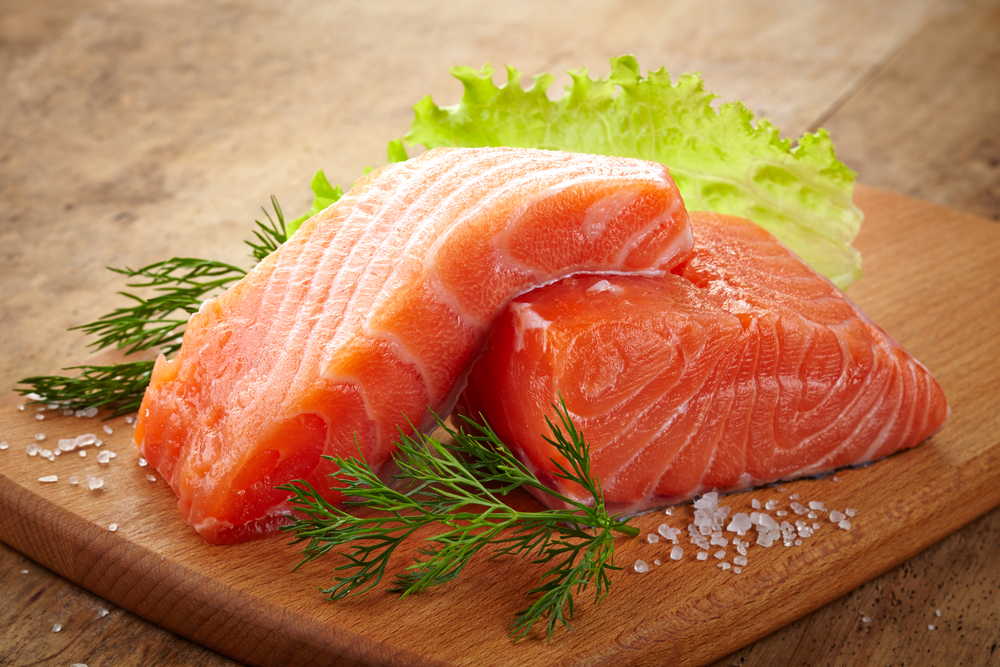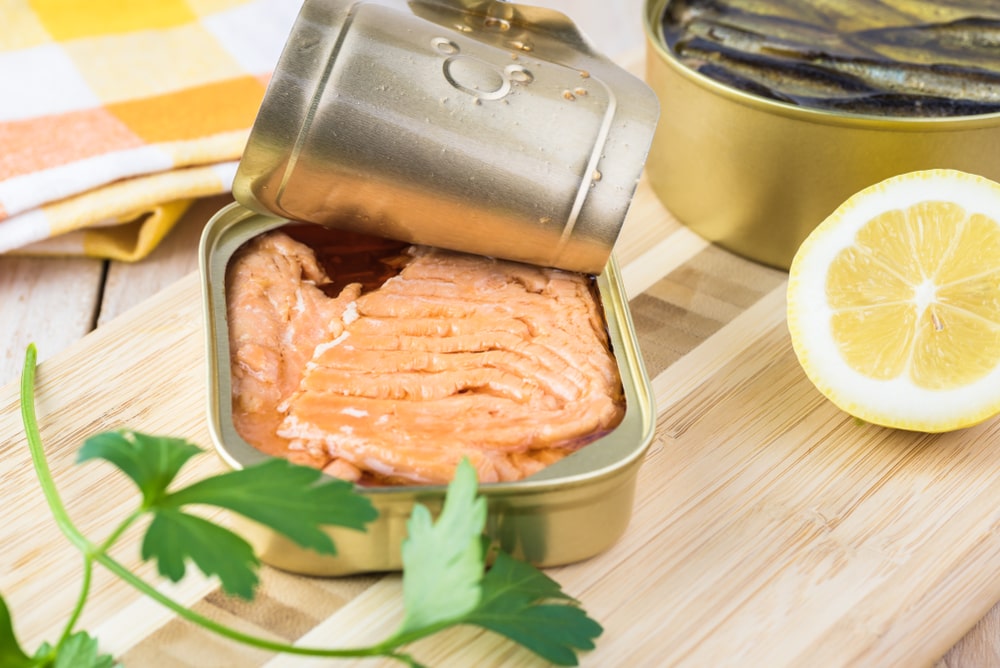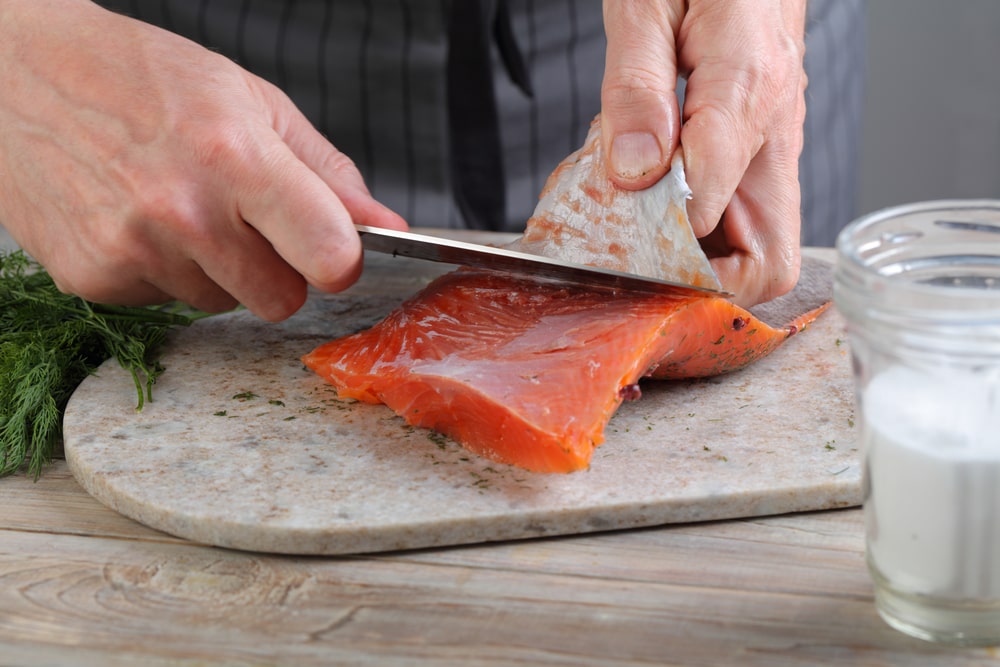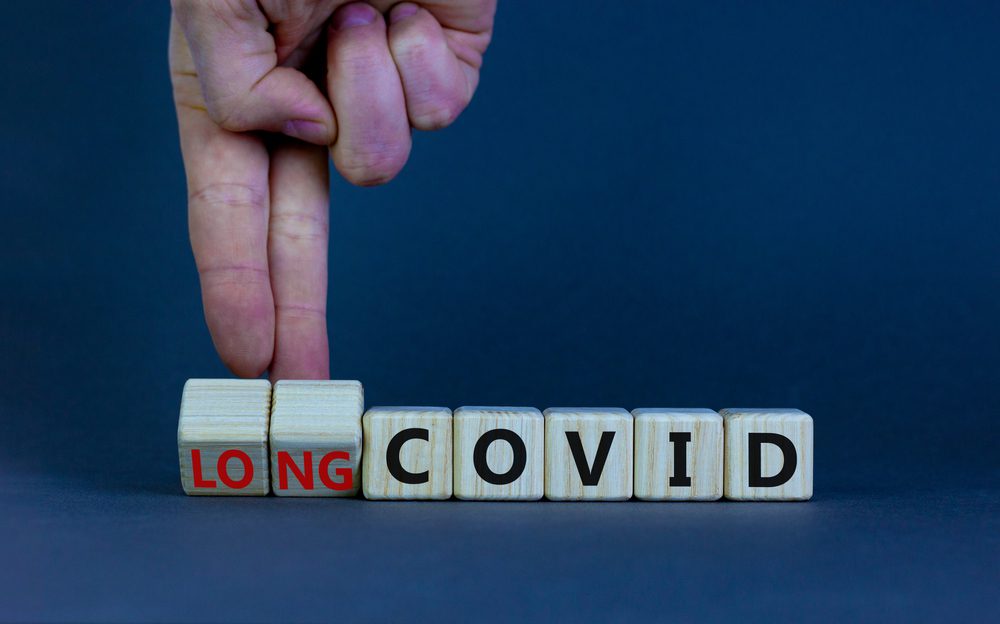These commonly known facts are actually salmon myths and we brought you the true stats!
Both the medical and culinary worlds are full of inaccuracies. Yet, we never expected to see so many salmon myths circulating around the internet, and the sad part is that there are a lot of people who believe all the false facts about it.
Salmon is known to be one of the most nutritious foods out there, filled with vitamins and nutrients but also with good omega-3 fatty acids and protein. This fish is one of the best things you can incorporate into your diet, as it comes with a lot of health benefits.
Yet, there are salmon myths out there about its nutritional value, more specifically what it can contain, that put people on edge. There are a lot of misleading facts about the fish that need to be cleared up so that you can enjoy it to its full potential and with a clean conscience.
We have gathered some of the most prevalent salmon myths that are just fishy facts and brought you the truth so that you can get good information here!
Did you know about these salmon myths before? Are there any other misconceptions about foods you want us to dispel? Let us know in the comments down below!

Salmon Myth 1: Fresh is better than frozen.
One of the fishiest salmon myths that swims around, and sometimes not just for this kind of fish, is that the frozen variety is not as good as its fresh counterpart.
The common myth that most believe is that frozen fish is not as nutritious, good in taste, or even as safe to eat as the fresh variety. They generally stem from the fact that people do not understand the freezing process and their skewed understanding of what fresh means.
A lot of people associate fresh with “just caught,” which is not the case unless you live close to a fish market near the ocean where they bring over fresh salmon. Otherwise, it is not the case, and you do not have to be wary of frozen salmon since it does not mean that it is not as nutritious or has lost its flavor.
The other misconception is that the longer a fish has been sitting, its quality diminishes. And while there is definitely a difference between freshly caught fish and fish that has been sitting for a couple of days, unless it has gone bad, there is no such problem there.
If anything, frozen salmon is where you should go. Once it has been caught, the fish is portioned, and it goes through a process called flash-freezing. This technology quickly freezes the fish, locking in all the flavor and thus maintaining the cut’s peak shape, freshness, and quality. It prevents the formation of ice crystals in the meat and halts any bacterial growth!
This salmon myth is false, as since the fish is frozen very soon after it has been caught, it maintains its properties and qualities.
The fresh salmon you see in most grocery aisles is less fresh than the frozen variety, and unless you trust the shop, it likely has undergone temperature changes, which favor the formation of ice crystals, which damage the protein and alter the fish’s texture, nutritional value, and flavor.
Much like with frozen veggies, frozen fish is sometimes fresher than what hits the shelves of huge grocery chains. So unless you have a salmon provider you try, do not listen to salmon myths and give credit to the frozen variety!
Salmon Myth 2: Salmon is high in mercury, regardless of species.
This is a salmon myth that has come about due to concern about mercury levels that exist in a lot of seafood, including fish. Yet, the reality is different from those people who want to demonize all types of fish due to mercury levels.
The concern is much more valid regarding big predatory kinds of fish, such as sharks, swordfish, and certain types of tuna. The mercury levels vary based on the size, diet, and age of the fish, and the big ones have more chances to accumulate more mercury.
When we look at salmon, whether we talk about farmed, wild, or canned, they all have similarly low levels of mercury, with the wild one having the lowest. However, the differences are insignificant, ranging from 0.01 to 0.02 parts per million, which makes this just a salmon myth and nothing true.
The levels are considered safe by the FDA (the U.S. Food and Drug Administration), so much so that you can safely eat salmon up to three times a week, even if you are part of a risk group, such as youth, people who are pregnant, or breastfeeding.
Follow your dietary restrictions before eating anything, but generally speaking, salmon is safe to eat no matter what!
If you want to learn how to make more salmon dishes, we recommend you give this book a read: Scrumptious Salmon Recipes.

Salmon Myth 3: Canned salmon is never as nutritious as fresh salmon.
Since we brought up canned salmon earlier, this is another salmon myth. It can also be considered a canned food myth since processed foods, such as canned ones, are not thought to be as nutritious and healthy as fresh ones.
The reality is a bit different than for people who are totally against canning. While it is true that the preparation of the fish and the process of canning are going to affect texture and flavor, they will do nothing to significantly affect the nutritional value of the fish.
If anything, canned salmon is just as much of a nutritional powerhouse as the fresh one, if not a different one.
The fish will keep the essential nutrients that most of us are after, the omega-3 fatty acids. high protein, vitamins B12, and D, along with zero carb content, with the added benefit of selenium and calcium that are present in the soft bones we generally discard when it comes to fresh salmon.
Canned salmon is an excellent alternative to the fresh one, especially since it may be more budget-friendly, and it helps when you do not have the time to make a whole meal from scratch with the frozen variety either.
Canning makes the produce shelf stable, and the process, much like the freezing one, locks in all the nutrients you want from the fish.
The idea that it is somehow inferior is just a salmon myth that holds no value with how much technology has advanced. One thing you need to be careful of is the salt concentration, as some brands use more than others, and you may not need to add any more salt to your dish if you use the canned variety.

Salmon Myth 4: You HAVE to remove the skin before cooking.
The last salmon myth we will tackle today is regarding the skin. A lot of us are not giving it a second thought, choosing to discard it, be it because we do not like the idea of slimy fish skin or because we have heard that it can be contaminated or contribute to an uneven cook on the fish.
However, it is a myth, and you do not need to strip the skin from the meat before you cook it. If anything, a lot of people are going to sing the praises of this part of the skin that a lot of us discard.
Salmon skin is actually part of what makes the fish so nutritionally full; it is full of vitamin D, minerals like niacin and phosphorus, and a healthy amount of omega-3.
When cooked correctly, meaning crispy and cooked thoroughly, it becomes another layer of texture, and the crackly salty addition to the fish is welcomed by many. If anything, starting the pan dry on the salted, clean skin side is going to help you cook the fish without risking drying it out, leaving you with flakier and juicier bites!
Salmon skin is safe to eat and even healthy, but you need to cook it correctly and be sure that you use good-quality fish!
There are lots of food myths out there, and probably organic or “eco” foods are some of them that are great examples of them. For example, did you know some fruits and veggies do not need to be bought organic since there is no difference between them and the “normal” kind? Read our article to discover the truth about organic fruits and veggies!

























